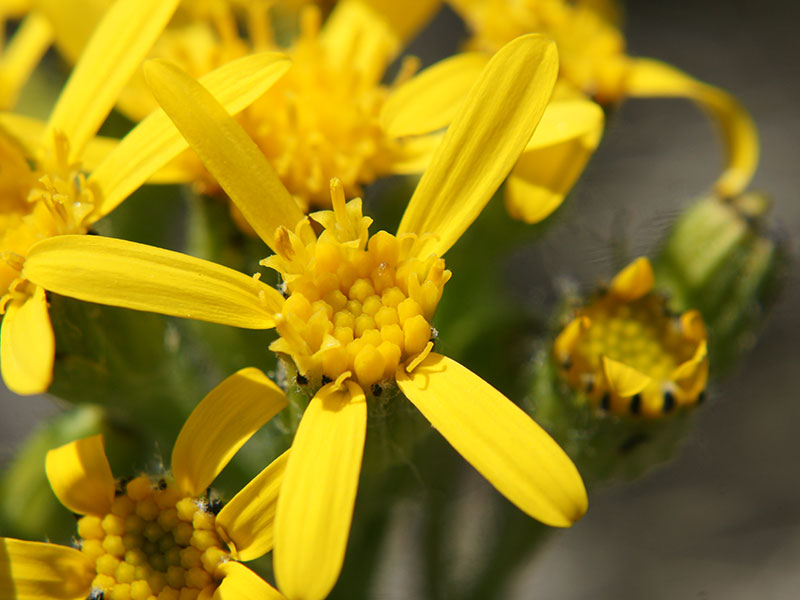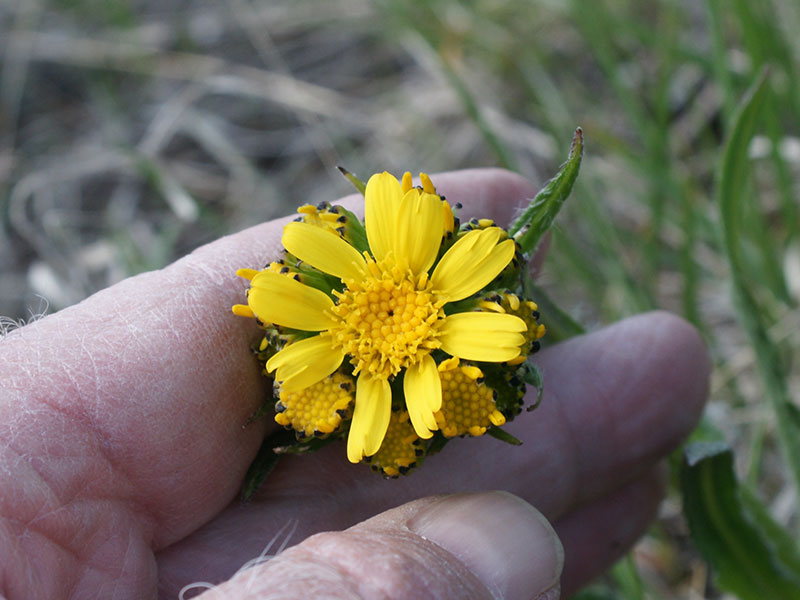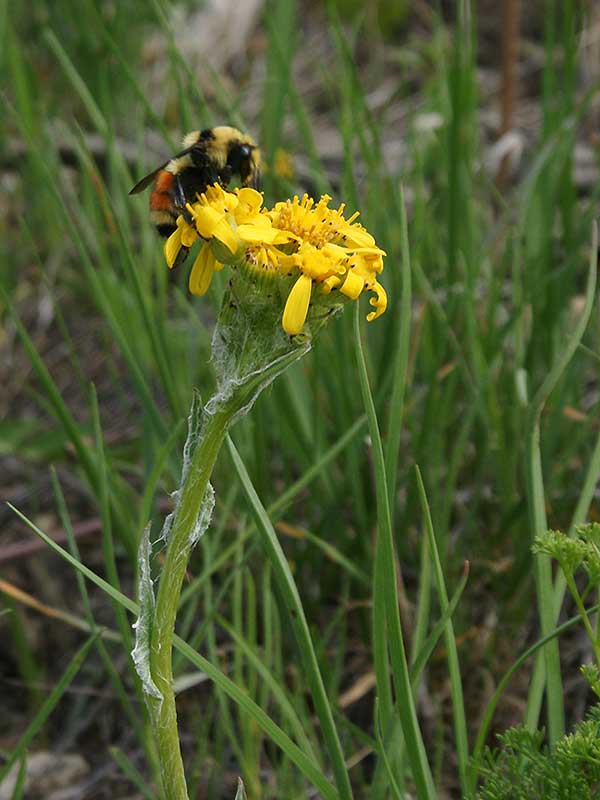Senecio integerrimus / tall western groundsel
- early spring to early summer, often with larkspur
- bright yellow flower head with several, disheveled looking blossoms
- only 5-13 ray florets (petals)
- cobwebby hairy basal leaves, especially when young
- seasonally moist areas, from sagebrush to higher parts of the fen
Also known as: lambtongue ragwort, entireleaf ragwort, common spring senecio, early spring senecio, Columbia groundsel
This bright yellow flower is a common spring senecio (which probably accounts for that common name) and often blooms at the same time as low larkspur, coloring meadows or sagebrush hills bright purple and yellow (and paying no royalties to either Montana State University or the University of Michigan for use of their school colors). The only other bright yellow with as much power in the spring might be dandelion, but we won’t go there just now.
You’ll find this plant in upland wetlands but also in drier sagebrush communities, starting on the exposed southern faces, and proceeding over the hill with time. On wetter soils, it reaches up to 30 inches, although it may be just 6 inches in dry areas that are seasonally moist in the spring. It is a biennial or perennial herb growing from a very short, button-like caudex and a fleshy root system.
You can start to see this plant and even identify it long before it flowers. Look at the photos in the gallery and you will see that as it pops out of the ground, it is rather bright red, then turns purple. Almost all young plants are covered in long, cobwebby hairs. A couple weeks later, it begins to bolt, bud and flower.
Although each shoot has a single flowering stem, each inflorescence bears several flower heads in a cluster. The middle head is often the largest. The relative lengths of the peduncles (the middle one being shorter) makes the cluster look flat and overall rather congested.
Each flowering heads contains many disc florets (see the closeups in the gallery) and a Fibonacci number of ray florets, usually 5, 8 or 13. Within the cluster, each blossom is only ½ to ¾ inch across. The ray florets around the Valley seem to be mostly yellow, but in other areas may be cream or white. And occasionally, you will find a head that lacks ray florets altogether.
Once flowering, the leaves of the tall western groundsel are mostly basal, usually without teeth, and overall elliptic or lanceolate. They are rather thick and fleshy. Basal leaves have petioles but as you progress up the stems, the leaves get smaller and eventually sessile toward the top. They may or may not still be hairy.
Although there are a lot of confusing members of the Asteraceae around here (and everywhere), there are not many that are yellow and bloom in the spring (tra la) and it is a fairly safe bet that if you find one growing on dry ground, with a fairly tall, single, upright stem and large, entire leaves, it is probably this species. This is especially true if the leaves are all cobwebby.
Interesting bits – Tall western groundsel gathers alkaloids that happen to be sticking around in the soil. This makes it poisonous to livestock, but this takes time to develop. Early in the season, it might be grazed by sheep, elk, and even cattle. A large population of this plant is an indicator of overgrazing on rangeland.
| Color | |
|---|---|
| Family | |
| Blossom size | |
| Inflorescence size | |
| Inflorescence type | |
| When? | |
| Where? |












